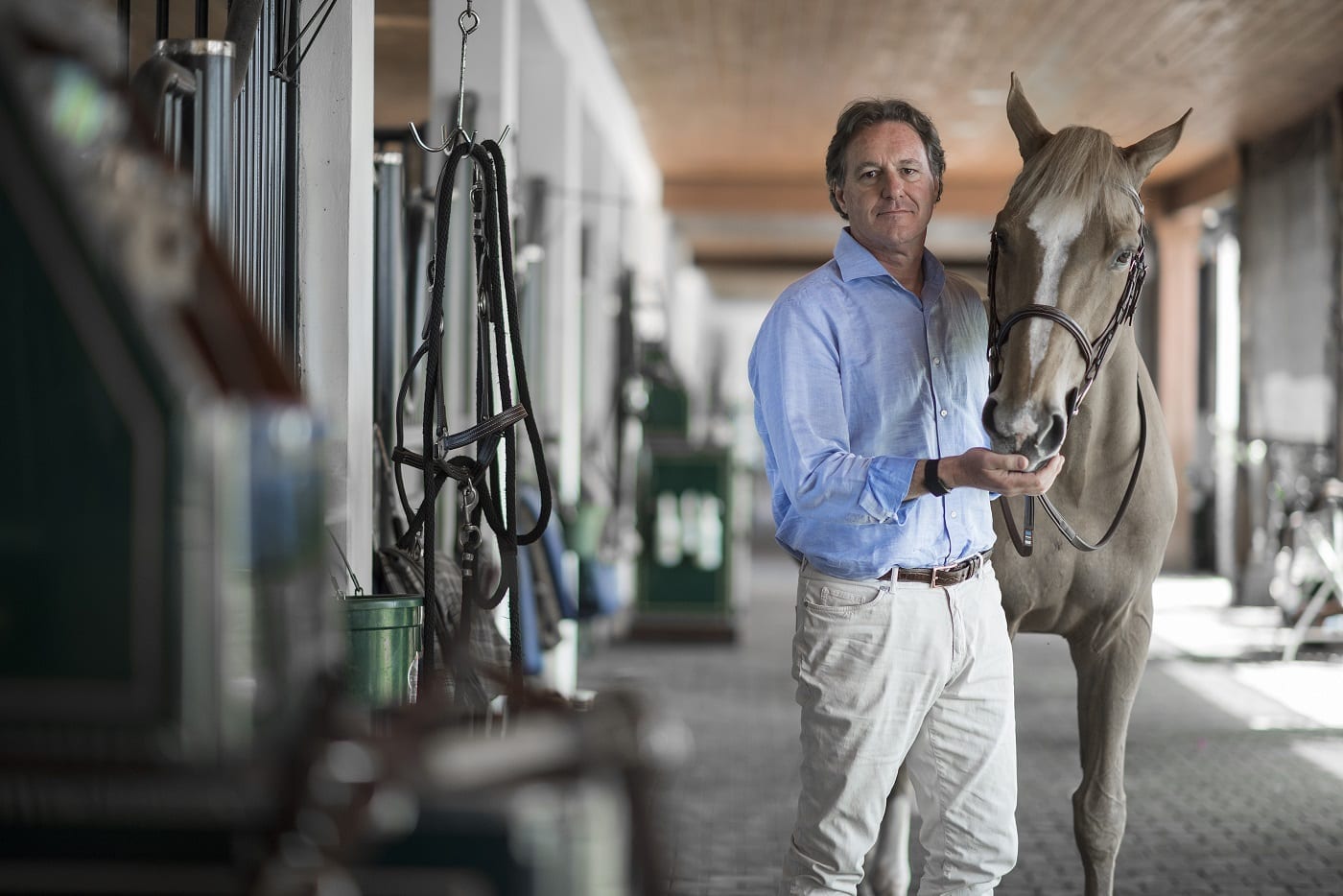The Tryon International Equestrian Center catapults to the top of the world’s premier horse parks.
By Rebecca Carr
When the news first flashed in late July 2016 that the FEI World Equestrian Games 2018 were pulling out of Canada for financial reasons, Michael Stone knew what would come next.
Stone, the right hand of the man who presides over the Tryon International Equestrian Center, even counted out loud how long it would take for the phone to ring: 5,4,3,2,1.
Bingo!
“We have to go for it,” said Mark Bellissimo, who heads the different partnerships that own not only the Tryon International Equestrian Center but the Palm Beach International Equestrian Center in Wellington, Florida and the Colorado Horse Park in Parker, Colorado, three of the world’s largest equestrian venues.
“I told him he was crazy, that it was an enormous project, and that 18 months is a very short time to prepare for something this big,” recalled Stone, who knows a thing or
two about hosting the FEI World Equestrian Games as the former secretary-general of the international organization. Stone has played a role in every set of games since their inception in Stockholm in 1990, but this would be the most challenging of all.
At the time, the Tryon International Equestrian Center, nestled on 1,600 acres in the foothills of the Blue Ridge Mountains, had less than two years of operation under its belt. Local residents and international equestrians were still in disbelief that Bellissimo and his partners had been able to turn rolling hills, once thick with trees, into an equestrian center that rivals any of the world’s finest horse parks. To do so, they had to move more than three million cubic yards of earth. But the skyline was still filled with cranes. Tractors still pawed the red clay earth to finish the massive indoor arena and to make way for a luxury hotel and other buildings.
Sure, hosting World Equestrian Games was on their minds for the future, but not so soon.
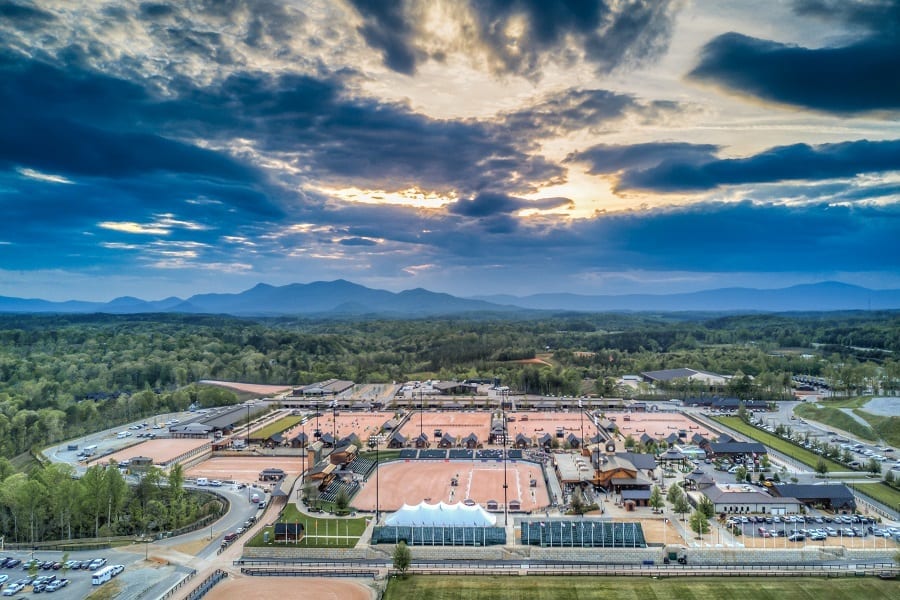 To build the Tryon International Equestrian Center, workers had to move more than 3 million cubic yards of earth — a veritable mountainside.
To build the Tryon International Equestrian Center, workers had to move more than 3 million cubic yards of earth — a veritable mountainside.
Bellissimo was determined. He saw an opening to bring something even bigger than the equestrian center to this mountainous pocket of western North Carolina off of U.S. Route 74. He wanted to go for it, not just for the glory of hosting what the equestrian sport sees as the equivalent of its own Olympic Games, but to ignite the economically depressed area, an area still feeling the impact of the collapse of the textile industry.
“It’s truly a spectacular venue, and almost all the necessary infrastructure for our eight disciplines is already in place.”
They could do this, Bellissimo urged, in his persuasive, yet soft-spoken way. He hammered back with facts. Tryon already had 1,200 stalls in permanent wooden barns complete with rubber floor mats and fans for each horse, far more than what would be needed for the anticipated 950 horses that would come to the Games. The center features 12 competition rings, one of the largest indoor arenas in North America, restaurants, shops, and a stadium with seating for 7,000, not to mention, a massive jumbotron to capture every move. Its cross-country course has already proven ready for major eventing competitions. It was easy to reach, located within an hour of Charlotte, 30 minutes from Asheville, and 40 minutes from Spartanburg and Greenville.
And then there was the resort draw for the World Equestrian Games spectators. Since opening, Bellissimo and his partners have turned Tryon into a “lifestyle destination resort,” appealing to the whole family, not just equestrians. To that end, they have added the 17-room Lodge on Lake Lure to provide swimming and boating. They opened the Cleghorn Golf & Country Club, which boasts an 18-hole course, designed by George Cobb, the mastermind behind the Par 3 course at Augusta National, a swimming pool, and the Cleghorn Gun Club about 10 minutes from the park, designed by Rick Hemingway and Heyward Cunningham, two nationally renowned sporting clay course designers.
All of these factors would surely win over the FEI, Bellissimo argued.
“Alright then, let’s pull it off,” Stone recalled telling Bellissimo, launching the most challenging 18 months of his career.
— Moving Mountains —
Within hours, the duo had mapped out a strategy with US Equestrian, the governing body of the equestrian sport in the United States, to convince the FEI that Tryon would be a sure bet for the 2018 World Equestrian Games™. There was one challenge: Rolex crowns the Tryon International Equestrian Center with one of its larger than life clocks rimmed in gold. Bellissimo had to convince Rolex, the main sponsor of Tryon, to let them temporarily remove their branding and allow corporate rival, Longines, the chief corporate sponsor of the FEI, to take over. Bellissimo flew to Geneva to meet with Rolex executives to explain what the games would mean for the region. They agreed.
“Many didn’t think that we would get World Equestrian Games because Rolex is our sponsor,” Bellissimo said. “One of the great gestures of corporate citizenship was Rolex allowing us to rebrand the venue as Longines during World Equestrian Games. It was important to them, as it is to us, to have a long term impact on the community.”
But the most compelling argument for holding the games at Tryon came down to people, Bellissimo said. “We have an amazing team—many of them local — people who know how to put on a high-profile equestrian event.”
“The Tryon team submitted a really impressive bid, and we have every confidence in the organizing committee,” said FEI President Ingmar De Vos, explaining how Tryon beat out the competition. “It’s a truly spectacle venue, and almost all the necessary infrastructure for our eight disciplines is already in place.”
Competition was stiff to replace Canada. Much was at stake—the 2014 World Equestrian Games in Normandy, France drew some 500,000 people to see the eight featured equestrian disciplines, generating more than $400 million for the region over 14 days. More than 360 million watched it on television.
“The Tryon team submitted a really impressive bid, and we have every confidence in the organizing committee,” said FEI President Ingmar De Vos, explaining how Tryon beat out the competition. “It’s a truly spectacular venue, and almost all the necessary infrastructure for our eight disciplines is already in place.”
With the winning bid in hand, Bellissimo and Stone had to figure out how to prepare for what is anticipated to be one of the largest sporting events in the United States in 2018. WEG will also be the most widely televised equestrian event in history under a contract reached with NBC Sports Group. They plan to broadcast more than 60 hours of coverage across NBC, NBCSN, and Olympic Channel: Home of Team USA.
Held every four years in the middle of the Olympic cycle, the Games combine eight world championships at one event: Jumping, Dressage, Para-Dressage, AD 5 Eventing, Driving, Endurance, Vaulting, and Reining.
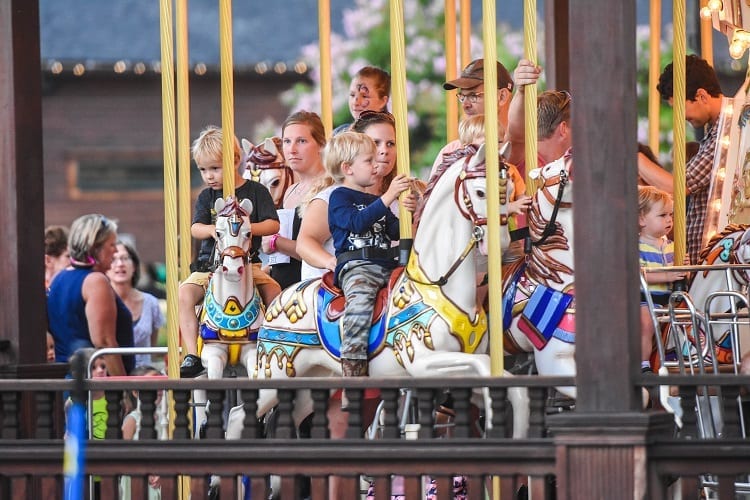
On a recent Saturday evening in July, children stood in line to ride a hand-painted Venetian carousel shipped in pieces from Italy. The carousel embodies the message that the Bellissimos want to deliver: Come enjoy the magic and majesty of horses at no cost.
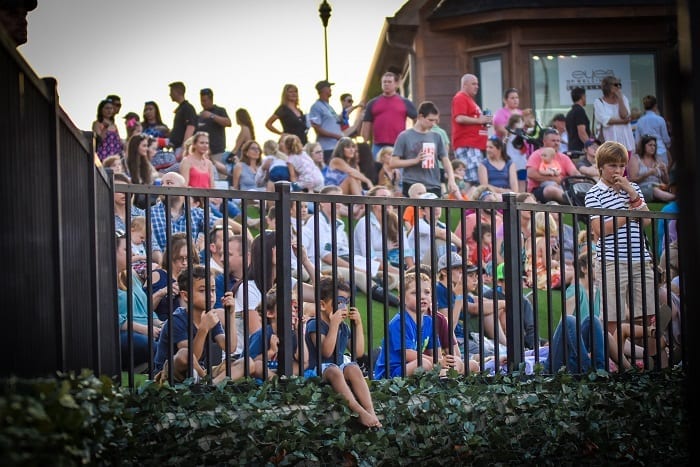
Crowds gather to watch Grand Prix riders clear 10 to 16 jumps with heights up to 1.6 meters (5 feet, 3 inches).

The Tryon International Equestrian Center draws some of the best riders in the world to complete.
The challenge was not so much how to put on the equestrian events. Most of the infrastructure was already in place to host all of the disciplines on site at once, Stone said. The challenge was the logistics of housing and transporting the athletes and their entourage of grooms, farriers, and vets. How do you control traffic in an area that is largely rural and marked by rolling hills, not super highways?
“You have to make sure that people can get from one point to another and that the flow of traffic does not clog highways,” Stone said. The FEI requires that Tryon provide shuttles from the airport to the horse park and then from the horse park to the hotels and back. Horses flying in from other countries have to be quarantined, so Stone had to figure out a plan for that too. “And then they all have to be fed too,” he laughed.
The past 18 months have been intense. Heavy rains of almost biblical proportions in the spring slowed construction and prevented the Tryon team from being able to grow grass on the cross-country course. To fix the problem, they had to get a special product called Mirimichi and sod, which they were only able to lay down in July.
To make room for a 20,000-seat stadium for dressage and jumping events, the Tryon team had to make the tough decision to rip up Bellissimo’s prized 12-acre derby field. They had to erect a three-story building called the International Pavilion, which allows the VIP section to overlook the stadium and the George Morris arena at the same time. They had to install 5,000 seats in the indoor arena. And at publication time, workers were working around the clock to finish a polo stadium that will be the main center for endurance and driving disciplines as well as a 250-room hotel at the entrance for athletes.
The rain was not the only foil. At one point in the building process, they could not get enough cement. Bellissimo’s solution? Build a cement plant on site. When they wanted to speed up the production of the hotel, he purchased a nearby factory to build high-quality modular units that can slide into a frame of the building, significantly cutting down the construction time.
Stone has spent more than a decade working for Bellissimo, who is managing partner of Wellington Equestrian Partners LLC and CEO of Equestrian Sport Productions LLC, which operate the prestigious Winter Equestrian Festival in Wellington, Florida, attracting more than 6,000 horses from 49 states and 30 countries with more than $9 million in prize money to their Palm Beach International Equestrian Center each winter. Stone helped Bellissimo turn the once sleepy Winter Equestrian Festival into a $200 million blockbuster for Palm Beach County. It is now the longest and largest hunter/jumper event in the world featuring up to 3,300 horses showing on any given week between January and March.
When Bellissimo wanted to host a horse show in Central Park, critics thought it would be impossible. But Bellissimo was able to convince then-citizen Donald Trump to allow 1,500 tons of equestrian footing in the Trump Ice Rink so that the Rolex Central Park Horse Show could take place. It has been a staple of the A-level horse show circuit ever since.
“Mark Bellissimo has a vision that is way beyond what most people have,” said Stone. “He is the best problem solver that I have ever met. If there is an issue, he finds a way around it.”
“Mark Bellissimo has a vision that is way beyond what most people have,” said Stone. “He is the best problem solver that I have ever met. If there is an issue, he finds a way around it.”
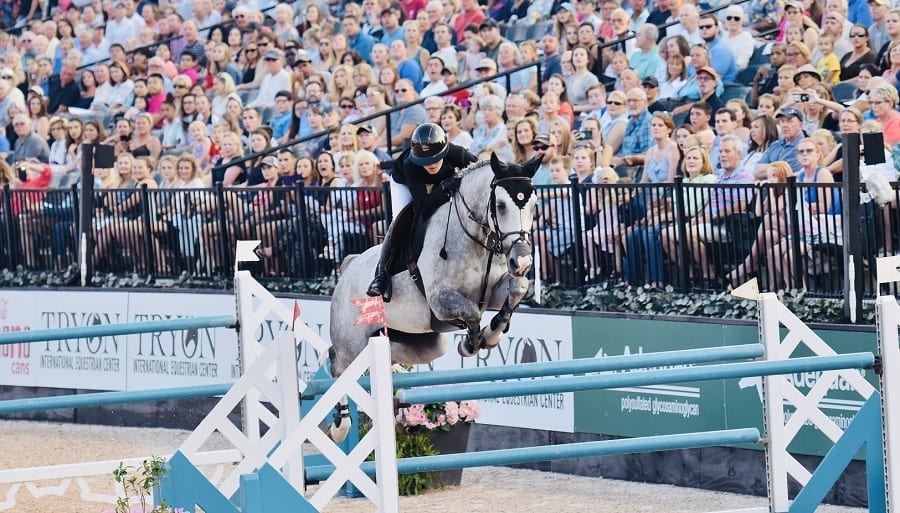
On Saturday evenings, spectators pack the George Morris arena to watch Grand Prix jumpers compete for free.
— The Magic of the Horse —
All told, Bellissimo and his partners have invested more than $500 million in the equine industry. In addition to Tryon, Wellington, and Colorado, they own the International Polo Club of Palm Beach, one of the highest profile polo venues in the world.
For WEG 2018, Bellissimo is focusing on the important role horses have played throughout history.
“All nations were discovered on the back of a horse. These amazing animals continue to provide livelihood, transportation, security, entertainment, friendship, therapy, and sport around the world. The love of the horse is universal, profound. WEG is an incredible stage to show how important and valuable these creatures are and celebrate our relationship with them,” Bellissimo said.
On a recent Saturday evening in July, children stood in line to ride a hand painted Venetian carousel shipped in pieces from Italy. The carousel, which is also at the entrance of the Wellington horse park, embodies the message that Bellissimo and his partners want to deliver: Come enjoy magic and majesty of horses at no cost.
“The greater the exposure to the sport, the better,” said Bellissimo. “The horse is sort of a mainstay within American history and culture. There is a lot of great energy around horses. Unfortunately, horses have been positioned as just for the elite—the sport of kings and the whole deal. The fact is there are not many 8-year-old girls who don’t want a pony at their birthday party. From our perspective, that is an important component to what we are doing here—open the horse world up and make it accessible to all.” And he has turned the Tryon horse park into an equestrian mecca that even the regulars on the Grand Prix circuit can’t believe.
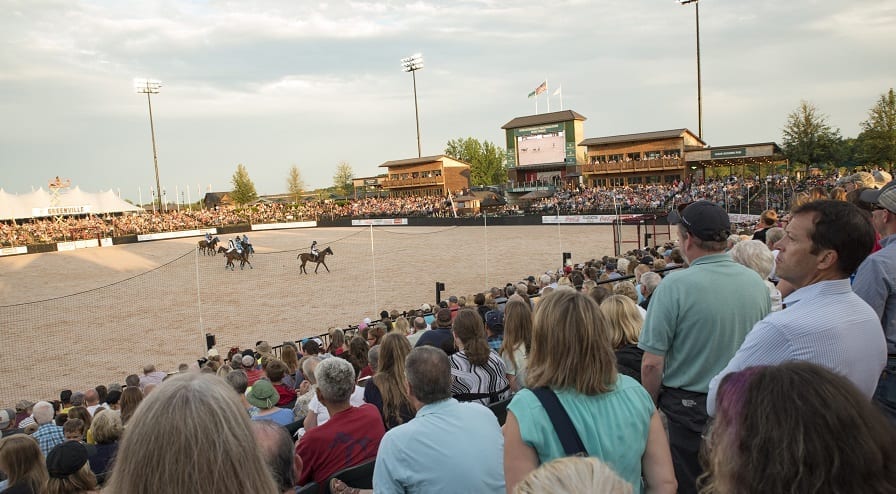
“Tryon is my favorite horse show because it is so well designed,” said Juan Ortiz, a grand prix jumper, who plans to compete at WEG on Venezuela’s team. As an international competitor, he has ridden at the top level all over the world. What makes Tryon stand out, he said, is the abundant enthusiasm of the local people. Fans pack the stadium on the weekend nights to watch the grand prix jumping. “You seldom see a horse show completely booked like that in America, but people come because it is a nice way to spend a Saturday night as a family with great food and great horses. It is simply the best.”
Bellissimo and his wife, Katherine, first came to the Tryon area to visit their friends and business partners, Jennifer and Roger Smith, who have a farm in the area. They were captivated by the beauty of the foothills, the people, and the community’s deep equestrian roots.
Tryon’s equestrian roots date back to 1925 when Carter Brown, a transplant from Michigan, founded the Tryon Riding & Hunt Club to organize the area’s horse enthusiasts. An avid fox hunter, he started the Tryon Hounds and urged his friends in the North to come stay at Tryon’s Pine Crest Hotel and ride. Brown launched the Tryon Horse Show the following year. The reputation started to build from there, and in 1956, members of the Tryon Riding and Hunt Club persuaded the U.S. Olympic riding team to practice at the Cotton Patch Farm and Harmon Field, an equestrian facility near downtown Tryon. The final Olympic trials were held that year at the Cotton Patch.

To make room for a 20,000-seat stadium for WEG’s dressage and jumping events, the Tryon team had to rip up Bellissimo’s prized 12-acre derby field.
“Our goal is to make this accessible. Whether you have $10 or $10 million, you should have an opportunity to be exposed to this,” Bellissimo has repeatedly said.
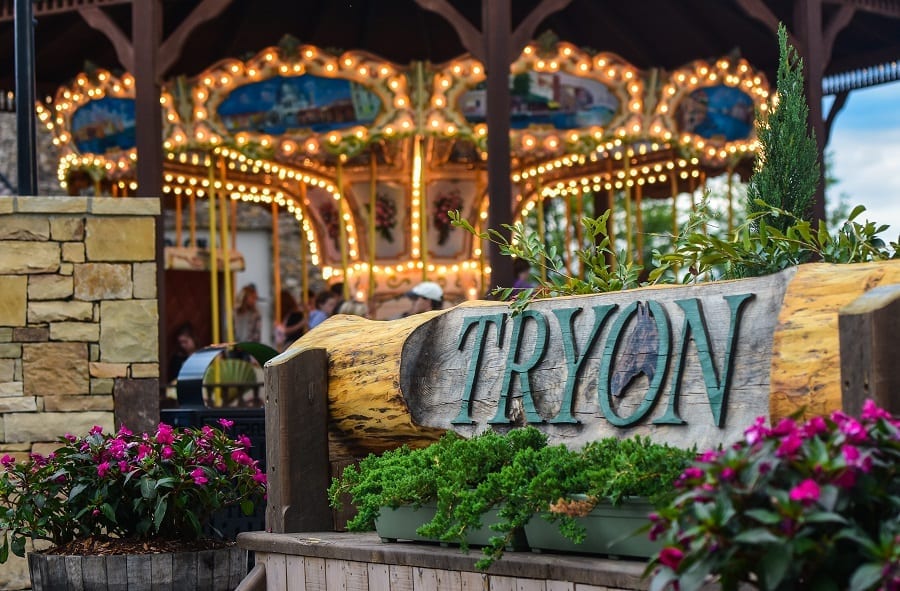
“The World Equestrian Games shine a light on that history and spur momentum into the equestrian scene by attracting the world’s highest ranked hunters, jumpers, eventers, and dressage to show in Tryon,” said Meg Atkinson, a realtor with IJB Properties/Christie’s International Real Estate.
“The century-long history of Tryon as a horse community is very strong. Tryon International is having a positive impact on real estate throughout the region as a partner that respects that history but also has a vision for future development that will bring opportunities to equestrians and spectators who enjoy the sport. The World Equestrian Games make this an exciting time for Tryon’s equestrian community, and the ripple effect is only just beginning.”
— The Magic of the Horse —
Bellissimo, 56, grew up in a middle-class suburb outside of Boston. He won a hockey scholarship to Andover, went on to Middlebury for college, and then earned his MBA from Harvard. He rode into the equestrian world after a successful career in corporate restructuring. The idea to transform the way horse shows are run came from watching Katherine and his daughters, Paige and Nicole, compete at horse shows. Bellissimo saw the porta potties, near-miss golf cart accidents, greasy fried food, and lack of shade. He knew that he could do better. He started to apply his experience overhauling companies to give spectators a better experience, and it worked like a charm.
At the bustling 50’s style diner named for Roger Smith, a Tryon partner, Mark and Katherine describe turning Tryon into a year-round destination that would be anchored by equestrian events but also feature other sporting events like soccer, field hockey, and lacrosse tournaments. They would offer ice hockey in the indoor arena—a novelty for the South. The pair envision turning the three-story International Pavilion into a corporate retreat center after WEG where meetings could happen, followed by a golf game or a swim at Cleghorn. The indoor arena could be used for music festivals and art exhibits when equestrian events are not underway. Their hope is that the Tryon International Equestrian Center would have a lasting impact on a region.

